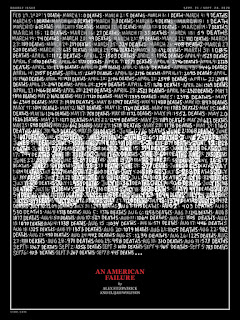On Our "Virtual Route 66" This Week: On @FEMA Watch
One Year Later: Biden-Harris Administration, FEMA Highlight Progress Made Through Bipartisan Infrastructure Law for More Resilient Nation
In the year since the Bipartisan Infrastructure Law was signed by President Biden, FEMA has announced significant grant money and several program initiatives and taken numerous bold actions to implement them across the agency to enhance the nation's resiliency.
The historic legislation provided FEMA $6.8 billion to invest in communitywide mitigation to reduce disaster suffering and avoid future disaster costs.
“The funding provided to FEMA under this landmark legislation represents the single largest investment in climate resilience made by our nation and is going to have significant impacts as communities are challenged with intensifying weather events,” said FEMA Administrator Deanne Criswell. “These critical investments have further empowered our agency to add more funding to both support current mitigation programs while also implementing changes to help communities impacted by climate change build back better.”
“Thanks to President Biden and the bold investments provided by the Bipartisan Infrastructure Law, FEMA will be better able to help communities before disaster strikes by making them more resilient against the impacts of climate change and extreme weather,” said FEMA Deputy Administrator Erik A. Hooks. “The Biden-Harris Administration has remained steadfast in its commitment to help our nation respond to and recover from hazards of all kinds and this funding is critical in that endeavor.”
Safeguarding Tomorrow through Ongoing Risk Mitigation Revolving Loan Fund (STORM)
In December, FEMA will post a grant funding opportunity to capitalize a revolving loan fund for hazard mitigation projects. The program will make at least $50 million available in capitalization grants to eligible entities -- including states, federally recognized tribes, Puerto Rico and the District of Columbia -- to fund low-interest loans to local governments. These loans will allow local jurisdictions to reduce vulnerability to hazards and foster greater community resilience.
The Bipartisan Infrastructure Law invests $500 million for this initiative over the next five years.
Dam Safety
The High Hazard Potential Dam Grant and the National Dam Safety State Assistance Grant programs awarded $33 million in fiscal year 2022 grants to 49 states and one territory for non-federal dams. Of this amount, it includes $13.7 million from the Bipartisan Infrastructure Law.
The funding provides technical, planning, design and construction grants for rehabilitating eligible high-hazard potential dams.
Over the next five years, FEMA will award $733 million from the Bipartisan Infrastructure Law in dam safety grants to states and territories to enhance dam safety and rehabilitate or remove aging dams.
Flood Mitigation Assistance
The Flood Mitigation Assistance (FMA) program -- funding projects that mitigate flood risks facing homes and communities -- is seeing a five-fold increase to $800 million for the fiscal year 2022 grant cycle. This historic increase was the result of an additional $700 million in Bipartisan Infrastructure Law funding for fiscal year 2022.
The law provides $3.5 billion in Flood Mitigation Assistance grants over five years -- $700 million per year, for fiscal years 2022–2026. In previous years, the annual grant cycle for the Flood Mitigation Assistance program ranged from $150-$200 million a year. The Bipartisan Infrastructure Law more than triples the amount available for future flood mitigation assistance.
Swift Current Initiative
The Swift Current initiative allocates a total of $60 million to Louisiana, Mississippi, New Jersey and Pennsylvania to expedite mitigation grants to disaster survivors with repetitively flooded homes. The amount comes from the $3.5 billion funding provided for Flood Mitigation Assistance from the Bipartisan Infrastructure Law.
FEMA selected these four states affected by Hurricane Ida in 2021. The states have the highest number of unmitigated severe repetitive loss and repetitive loss properties insured under the National Flood Insurance Program. In addition, they have the most Ida flood insurance claims within their respective FEMA regions.
Cyber Security
For fiscal year 2022, the Department of Homeland Security is providing $185 million to address cybersecurity risks and cybersecurity threats to information systems owned or operated by, or on behalf of, state local and territorial governments. The program enables the Department of Homeland Security to make targeted cybersecurity investments in state, local and territorial government agencies.
This fall, FEMA gathered feedback from tribal officials on the development of the Tribal Cybersecurity Grant Program (TCGP). FEMA expects to publish the funding opportunity for the program in January.
The Bipartisan Infrastructure Law provides $1 billion over the next four years in a whole-of-nation effort to combat cyber threats and enhance cybersecurity grant programs.
Building Resilient Infrastructure and Communities
The funding level for the Building Resilient Infrastructure and Communities (BRIC) annual grant program -- funding projects that protect people and infrastructure from natural hazards and the effects of climate change -- more than doubled to nearly $2.3 billion for the fiscal year 2022 funding cycle. This increase was bolstered by $200 million through the Bipartisan Infrastructure Law.
The law provides $1 billion over five years, which is in addition to the funding FEMA provides through setting aside up to 6% of the assistance the agency provides following major disaster declarations through the Public Assistance and Individuals and Households Program.
Expanded Program Accessibility
To reduce barriers in accessing FEMA programs and ensure federal funding can reach more communities, FEMA enacted several changes to this year’s application cycle:
First, by using money from Bipartisan Infrastructure Law of 2021, FEMA expanded the number of applicants that qualify for an increased federal cost share for the Flood Mitigation Assistance program. Applicants with a CDC Social Vulnerability Score greater than .5 may receive a 90% federal cost share. This lowers the financial burden on smaller governments, underserved and disadvantaged communities, in addition to repetitive and severe repetitive loss properties previously eligible for an increased cost share.
Second, FEMA expanded investment in the BRIC’s non-financial Direct Technical Assistance to at least 40 communities to help with the application process for future submissions. Direct Technical Assistance helps communities submit high-quality applications and implement innovative projects that reduce risk and increase resilience.
FEMA is accepting requests for assistance now. Applicants can visit the BRIC Direct Technical Assistance webpage to find information and detailed instructions on how to submit an application in English or Spanish.
Third, FEMA is no longer requiring federally recognized tribal nations and economically disadvantaged/rural communities submit a cost-benefit analysis when they apply for BRIC and the Flood Mitigation Assistance programs. This is one of the most common barriers to a successful application. FEMA will later help these communities complete an analysis during the pre-award process to ensure the projects are cost-effective.


Comments
Post a Comment